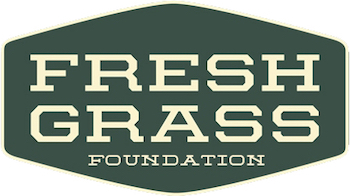Women’s History Month: Spotlight on Folk Alley

As Women’s History Month 2024 comes to an end, we thought we’d reshare an article we first published last March. All month we’ve been celebrating some of our favorite women in music on our website and social media. (Check out our features on Maddy Prior, Bessie Jones, Sarah Jarosz, Karan Casey, Mary Black, and The Roches.)
So, what’s the history behind Women’s History Month? Why does it even exist and how can you celebrate? Here are a few of our favorite facts — and, if you’re interested in a deeper dive, take a look at the National Women’s History Museum.
Women didn’t always get a month to celebrate. In fact, celebrating women in the US started as just a day in certain places. It grew to a week in the early 1980s around the country and, eventually, the month of March was officially designated as Women’s History Month. That happened in March of 1987.
Now, WHY did this happen? Well, lots of reasons, of course. To use the “right” language, though, Women’s History Month “celebrates the contributions women have made to the United States and recognize the specific achievements women have made over the course of American history in a variety of fields.” Well, alright then.
So, how can YOU celebrate Women’s History Month?
Seems like there’s not one right way to celebrate or acknowledge the contributions of women in the United States. And seems like there’s not one huge celebration that’s planned by a committee, either.
What DOES happen, though, is that “the Library of Congress, National Archives and Records Administration, National Endowment for the Humanities, National Gallery of Art, National Park Service, Smithsonian Institution and United States Holocaust Memorial Museum all join in commemorating and encouraging the study, observance and celebration of the vital role of women in American history.”
The National Endowment for the Humanities, for example, offers up some thought-provoking questions you might want to use at your next dinner party or happy hour. The organization ALSO showcases a pretty great podcast you might want to check out. While BackStory isn’t exclusively focused on women and women’s history, there are quite a few episodes that dive a little deeper into the impact women have made in the United States. Here’s one example.
The National Park Service, for example, uses March as a month to amplify women’s voices and commemorate the role of women in the history of America’s parks. Curious about where women have made history in the United States? The National Park Service helps you HERE.
Interested in sharing your own personal “park story”? (What’s a park story?) Well, “From national parks to local spaces in your community, the National Park Service protects places that connect us to our past, to ourselves, and to one another through preserving nature, history, and experiences. Each person has their own special connections with certain park places that are very meaningful to them.” Here’s where you can share your park story.
And, in case you didn’t know, Folk Alley is led by a small team of very dedicated women – all of whom love music, love sharing good music with YOU, and love dogs. (Pictured: Linda Fahey with the smiling dog, Cindy Howes and her big dog, Elena See with the laughing dog.)
We’re glad to be here with you every single day! And we’re glad to shine a spotlight on other incredible women who are vital to creating the great music we share with you on Folk Alley.




